Abstract
Leaf water potentials were estimated from the sum of the balancing pressure measured with a pressure chamber and the osmotic potential of the xylem sap in leafy shoots or leaves. When leaf water potentials in yew, rhododendron, and sunflower were compared with those measured with a thermocouple psychrometer known to indicate accurate values of leaf water potential, determinations were within ± 2 bars of the psychrometer measurements with sunflower and yew. In rhododendron. water potentials measured with the pressure chamber plus xylem sap were 2.5 bars less negative to 4 bars more negative than psychrometer measurements.
The discrepancies in the rhododendron measurements could be attributed, at least in part, to the filling of tissues other than xylem with xylem sap during measurements with the pressure chamber. It was concluded that, although stem characteristics may affect the measurements, pressure chamber determinations were sufficiently close to psychrometer measurements that the pressure chamber may be used for relative measurements of leaf water potentials, especially in sunflower and yew. For accurate determinations of leaf water potential, however, pressure chamber measurements must be calibrated with a thermocouple psychrometer.
Full text
PDF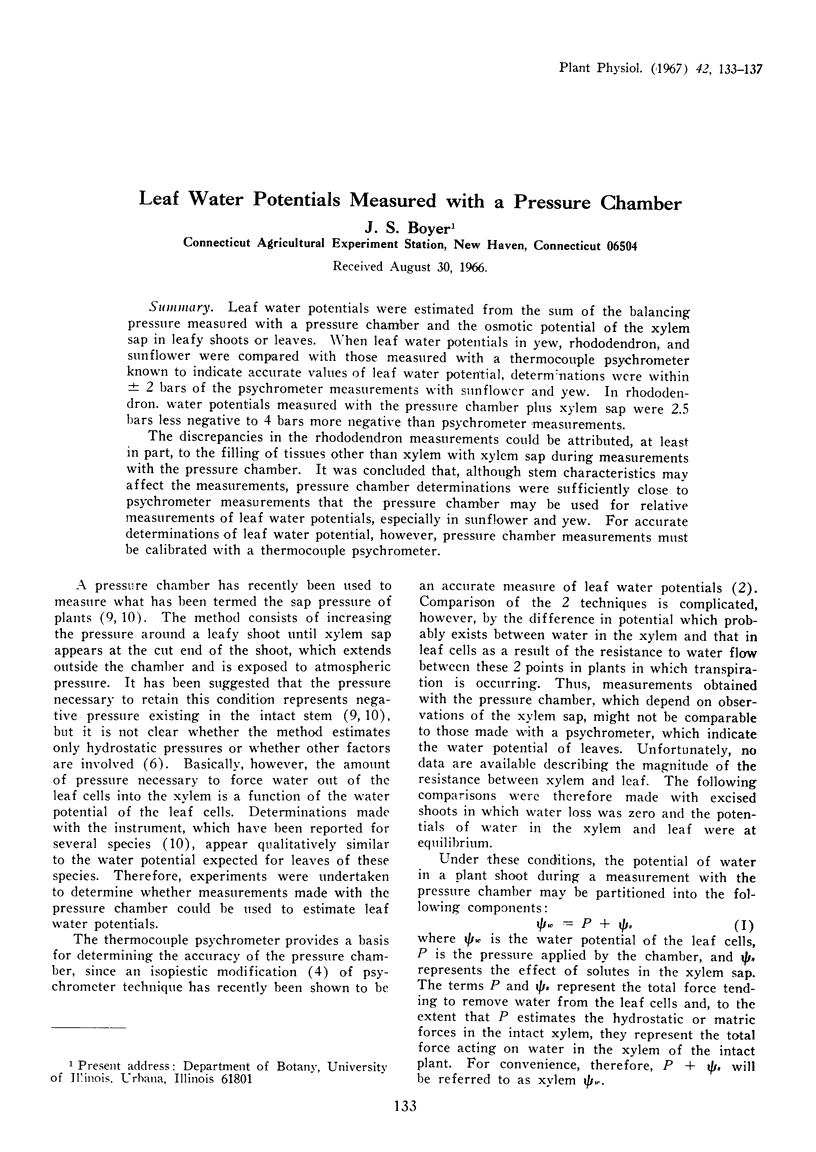
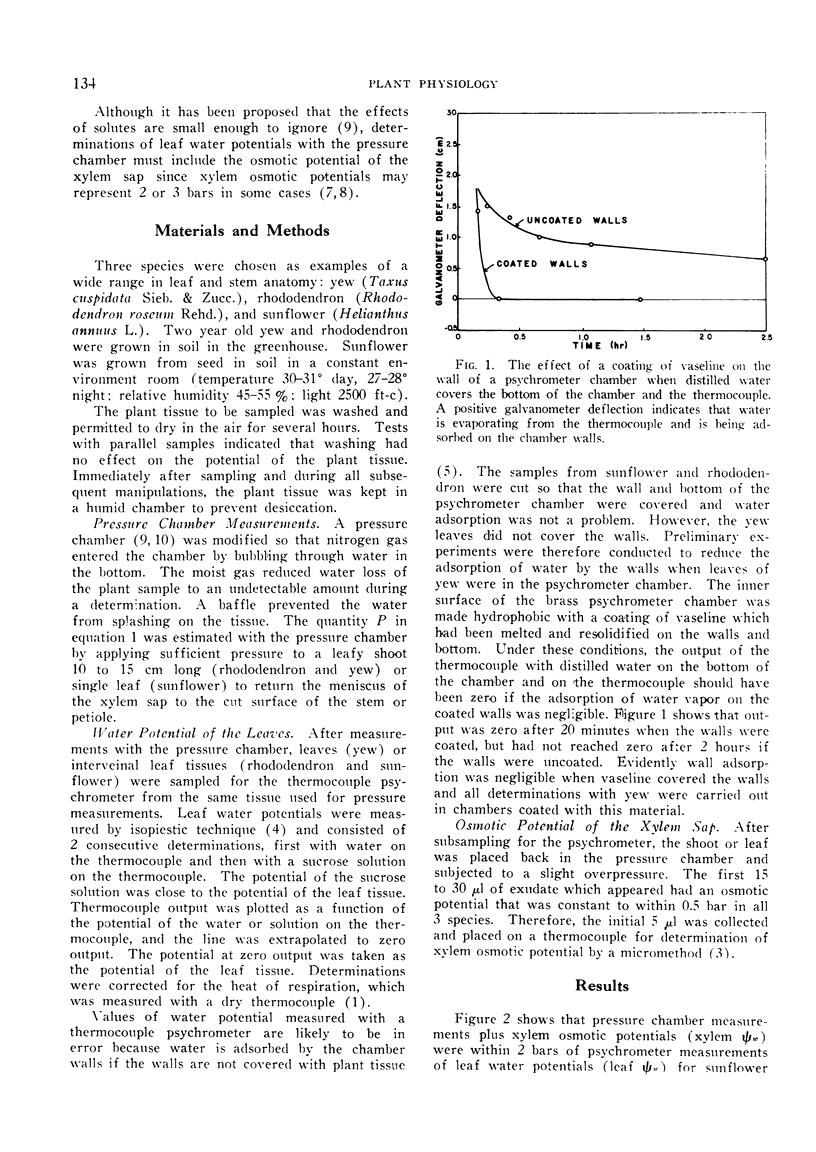
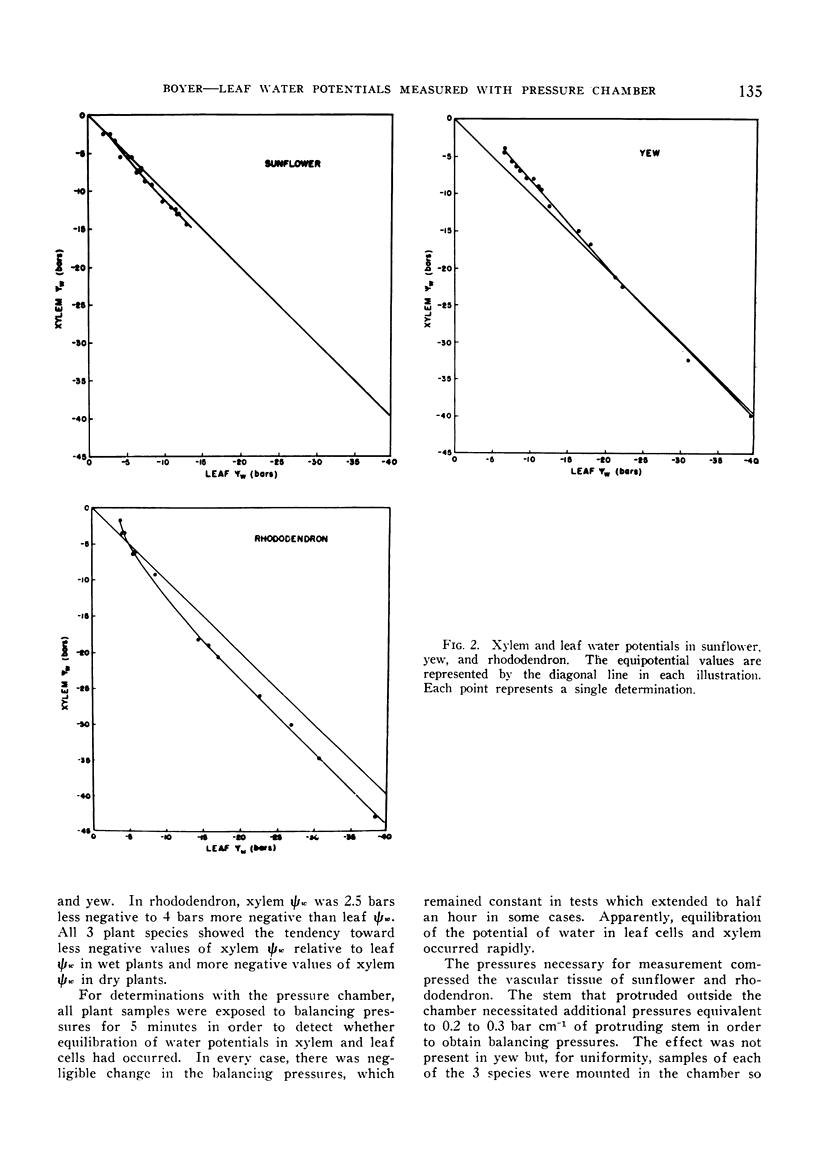
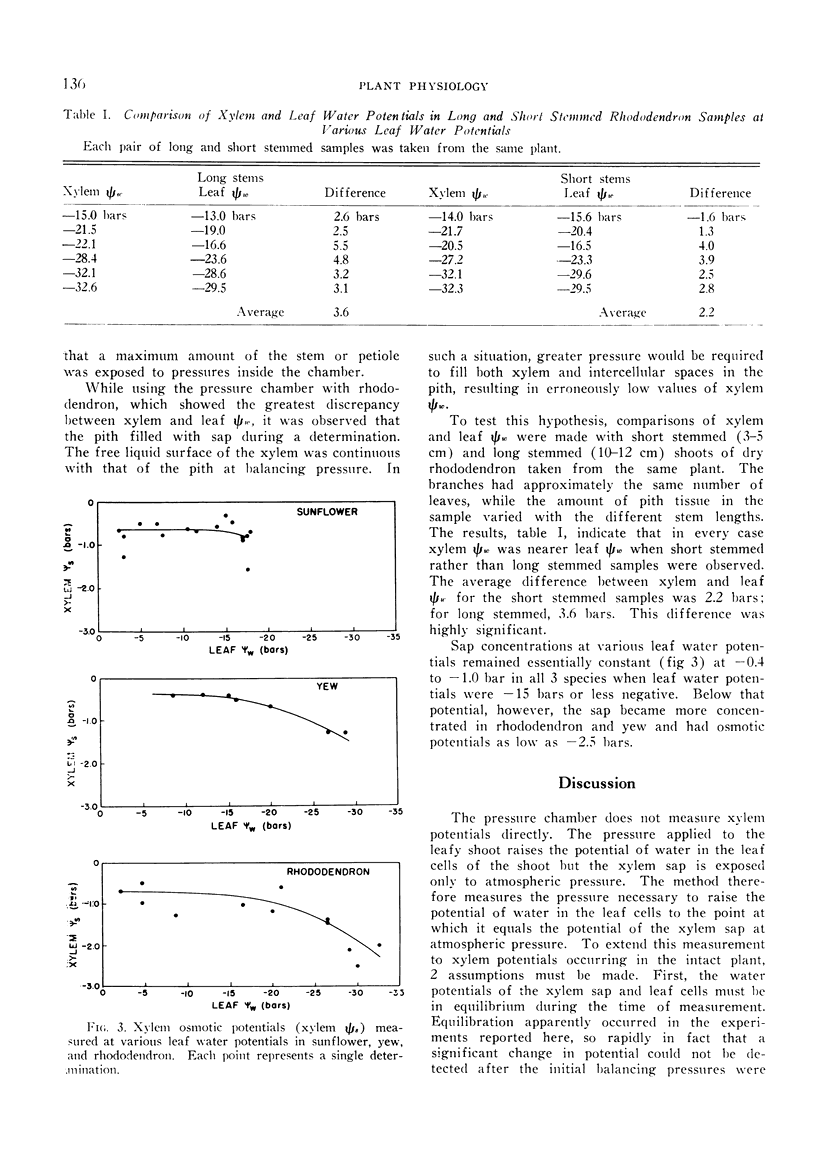
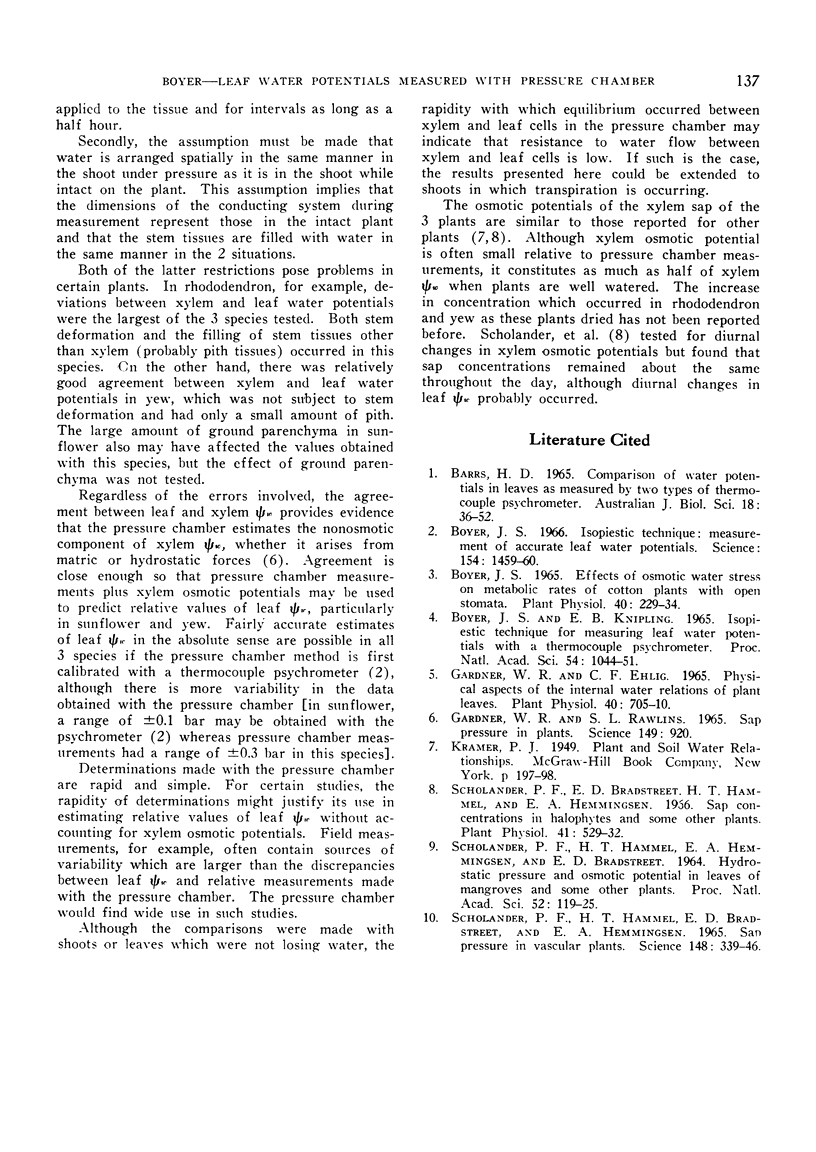
Selected References
These references are in PubMed. This may not be the complete list of references from this article.
- Boyer J. S. Effects of Osmotic Water Stress on Metabolic Rates of Cotton Plants with Open Stomata. Plant Physiol. 1965 Mar;40(2):229–234. doi: 10.1104/pp.40.2.229. [DOI] [PMC free article] [PubMed] [Google Scholar]
- Boyer J. S. Isopiestic technique: measurement of accurate leaf water potentials. Science. 1966 Dec 16;154(3755):1459–1460. doi: 10.1126/science.154.3755.1459. [DOI] [PubMed] [Google Scholar]
- Gardner W. R., Ehlig C. F. Physical Aspects of the Internal Water Relations of Plant Leaves. Plant Physiol. 1965 Jul;40(4):705–710. doi: 10.1104/pp.40.4.705. [DOI] [PMC free article] [PubMed] [Google Scholar]
- Gardner W. R., Rawlins S. L. Sap Pressure in Plants. Science. 1965 Aug 27;149(3687):920–920. doi: 10.1126/science.149.3687.920. [DOI] [PubMed] [Google Scholar]
- Scholander P. F., Bradstreet E. D., Hammel H. T., Hemmingsen E. A. Sap concentrations in halophytes and some other plants. Plant Physiol. 1966 Mar;41(3):529–532. doi: 10.1104/pp.41.3.529. [DOI] [PMC free article] [PubMed] [Google Scholar]
- Scholander P. F., Bradstreet E. D., Hemmingsen E. A., Hammel H. T. Sap Pressure in Vascular Plants: Negative hydrostatic pressure can be measured in plants. Science. 1965 Apr 16;148(3668):339–346. doi: 10.1126/science.148.3668.339. [DOI] [PubMed] [Google Scholar]
- Scholander P. F., Hammel H. T., Hemmingsen E. A., Bradstreet E. D. HYDROSTATIC PRESSURE AND OSMOTIC POTENTIAL IN LEAVES OF MANGROVES AND SOME OTHER PLANTS. Proc Natl Acad Sci U S A. 1964 Jul;52(1):119–125. doi: 10.1073/pnas.52.1.119. [DOI] [PMC free article] [PubMed] [Google Scholar]
- Twente J. W., Twente J. A. Regulation of hibernating periods by temperature. Proc Natl Acad Sci U S A. 1965 Oct;54(4):1044–1051. [PMC free article] [PubMed] [Google Scholar]


